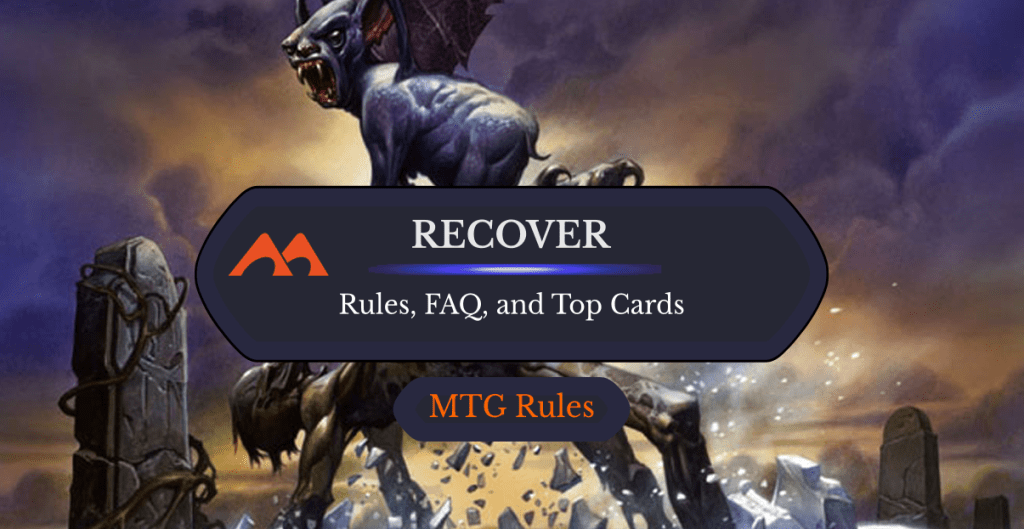
Grim Harvest | Illustration by Zoltan Boros & Gabor Szikszai
Recover probably belongs to that group of Magic: The Gathering mechanics that sounded better in the designers' minds. Although, by how few recover cards there are and by how the keyword was never used in other sets, I think it's safe to assume that maybe even the designers had their doubts about this particular keyword.
It’s still a quintessentially Magic-al mechanic, though, since it's all about using your graveyard as a resource. And the odds of recover someday returning to MTG are low, but certainly higher than zero.
Let's look at one of the most uncommon keywords in MTG, with just seven recover cards in the whole game.
How Does Recover Work?
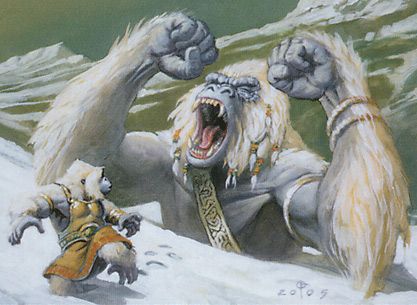
Resize | Illustration by Daren Bader
The recover keyword is fairly straightforward: If a card with recover is already in your graveyard, any time a creature goes to your graveyard from the battlefield (usually known as “dying”) you get this choice:
- Pay the recover cost to return the recover card to your hand, or
- The recover card is exiled.
Notice that this is very much an “either/or” choice that you must make whenever one of your creatures dies: If you don't pay the recover cost then and there, the recover card is exiled. You don't get to choose later or choose not to choose!
The History of Recover in MTG
Recover debuted in Coldsnap, the third set of the Ice Age block, back in July 2006.
The keyword was inspired by Death Spark and Krovikan Horror, two cards from the Ice Age expansion. Recover attempted to expand Death Spark‘s and Krovikan Horror‘s recursion and “card order in your graveyard matters” themes.
Recover's debut was doomed to be the keyword's sole time under the spotlight, and no set after Coldsnap used the mechanic, which should already tell us something about how successful it was.
It may be back someday, though: MTG head designer Mark Rosewater, on his personal blog, rated recover as a seven on Magic's Storm Scale, an informal scale running from 1 to 10 that rates how likely a mechanic is to return in future MTG sets. According to Mark, recover ended up a little clunky because it was trying to mirror an Ice Age card.
Can Recover Trigger Multiple Times?
Yes, it can. Multiple multiples, in fact!
On the one hand, any one of your creatures entering the graveyard from the battlefield causes the recover ability to trigger on all your recover cards that were already in your graveyard. And remember: Recover is not an optional effect, so whenever one of your creatures dies, you must be ready to either pay the recover cost(s) or exile the recover card(s). In this scenario, you get to choose which cards you want to recover, if any (as long as you can pay their recover cost).
On the other hand, if several of your creatures die at the same time because someone casts a board wipe like Wrath of God, each of your creatures triggers the recover ability of cards already in your graveyard. So if six of your creatures die and you have Grim Harvest in your graveyard, Grim Harvest's recover ability triggers six times, once per creature that died.
What happens in the above scenario is that the only trigger that matters in practice (and therefore the only one you need to worry about paying for) is the first one you’ll resolve. The first recover trigger to resolve takes Grim Harvest out of your graveyard and puts it back into your hand or into exile, and the remaining five unpaid recovers just “hit a blank” and fizzle. They all try to exile a card from your graveyard that is no longer there because it already in your hand or in exile.
Do Tokens Trigger Recover?
Yep, they do, as long as they fulfill the recover clause (namely, that these tokens are creatures that die on the battlefield).
And yes, a token creature goes to the graveyard when it’s destroyed or sacrificed, just like any regular creature. And just like any regular creature that has just bought the farm, a dying creature token triggers all the leaves-the-battlefield effects and all the enter-the-graveyard effects that a non-token creature does. It's only once it’s in the graveyard that the creature token vanishes from the game and ceases to exist.
When playing MTG on paper, we often skip this “let's put the token in the graveyard and then make it vanish” formality whenever enter-the-graveyard effects don’t matter, and we just vanish the tokens directly from the battlefield. And if you play on Magic Arena, these steps may be nearly impossible to notice since the game manages it all automatically. But, according to MTG rules, tokens go from the battlefield to wherever a normal card would, triggering every single change-zone effect a normal card would, and only then and there they cease to exist.
Therefore, any token creature that is destroyed or sacrificed:
- Enters the graveyard from the battlefield, exactly like any normal creature would,
- Triggers recover (and/or any other enter-the-graveyard effect), again exactly like any normal creature does,
- Then vanishes into nothingness, as tokens are fated to do.
Does Exile Trigger Recover?
Nope. Exiling a creature from the battlefield moves the creature from the battlefield to the exile zone, not the graveyard, and therefore fails to meet recover's trigger clause.
Recover also ignores discard effects, by the way. When you discard a creature, it enters the graveyard from your hand. Recover is very nitpicky about your creature's exact itinerary.
For recover, the only things that counts are non-stop, battlefield-to-graveyard one-way trips.
Gallery and List of Recover Cards
Best Recover Cards
Let's be blunt here: None of these recover cards are very good.
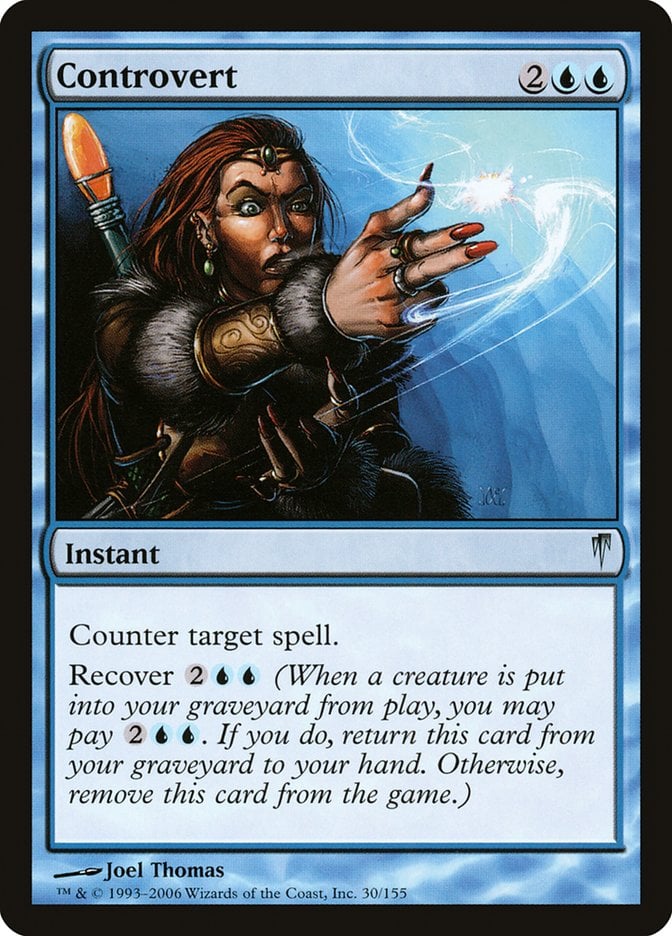
They’re grossly overcosted for their main effect. Take Controvert: A full-range counterspell sure is nice, but at 4 mana it's prohibitively expensive. And paying another 4 mana to basically draw you just one card? Forget about it.
Or take Grim Harvest, which I guess Wizards of the Coast thinks is a cool card since they have included it on The List: Raise the Draugr or Soulless Revival cost exactly the same and are also instants, but Raise the Draugr and Soulless Revival provide you with extra utility without having to worry about when your creatures die.

Grim Harvest does see some play in Pauper and the only recover rare, Garza's Assassin, may have some utility in Modern sideboards. But all in all, recover cards' only redeeming quality seems to be their very affordable market price: You can get any of them for less than a dollar, and often less than a quarter.
Wrap Up
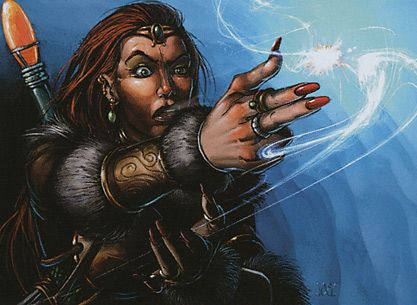
Controvert | Illustration by Joel Thomas
I have to say that, on paper, recover does sound like an interesting mechanic; I tend to enjoy decks with recursion, and using the graveyard as a resource is one of the key differences between Magic and most other TCGs that came afterward.
The “Pay or exile… now!” clause just makes them too unwieldy, I think. Perhaps if the cost were something different than mana, like life as in Garza's Assassin‘s case but for a much smaller cost (and smaller effect), the keyword could see a return? As we saw, Mark Rosewater said that recover was a 7 on the Storm Scale, so while unlikely, it's not that unlikely.
Agree? Disagree? Let me know in the comments, or stop by the Draftsim Discord for a chat.
And speedy recovery from this battlefield-to-graveyard trip!
Follow Draftsim for awesome articles and set updates:
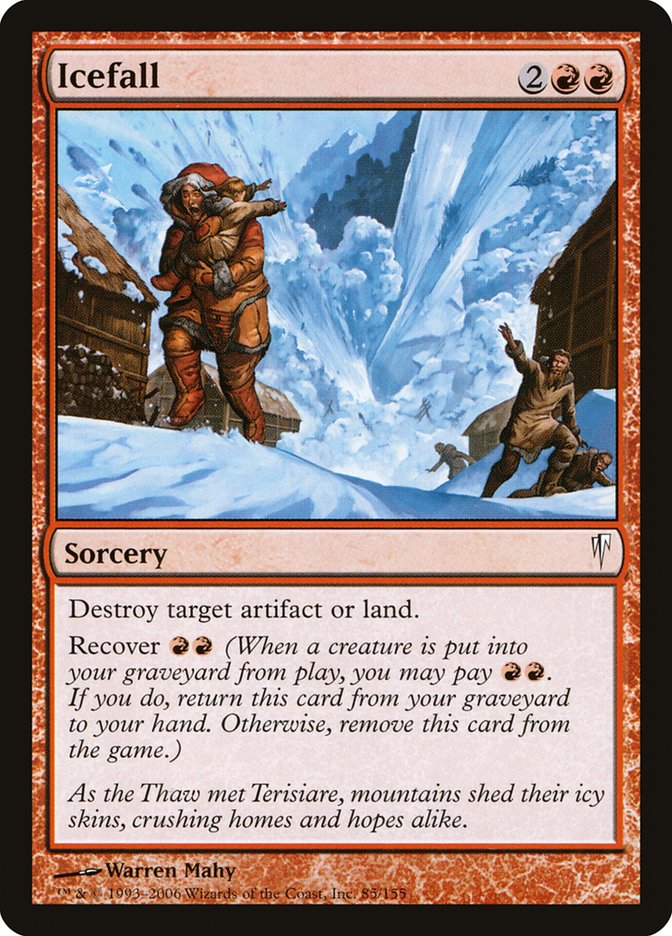

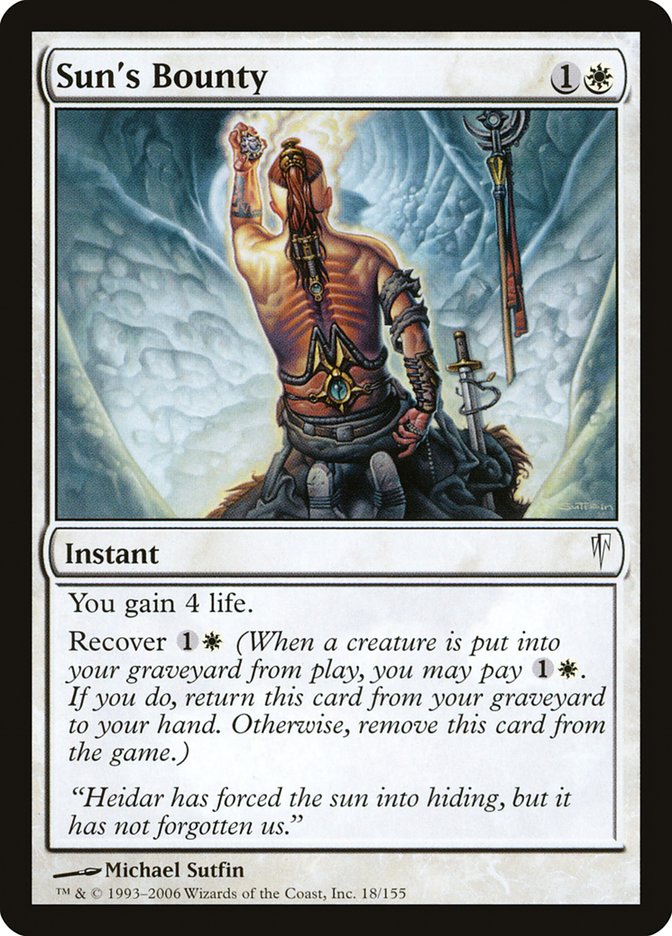
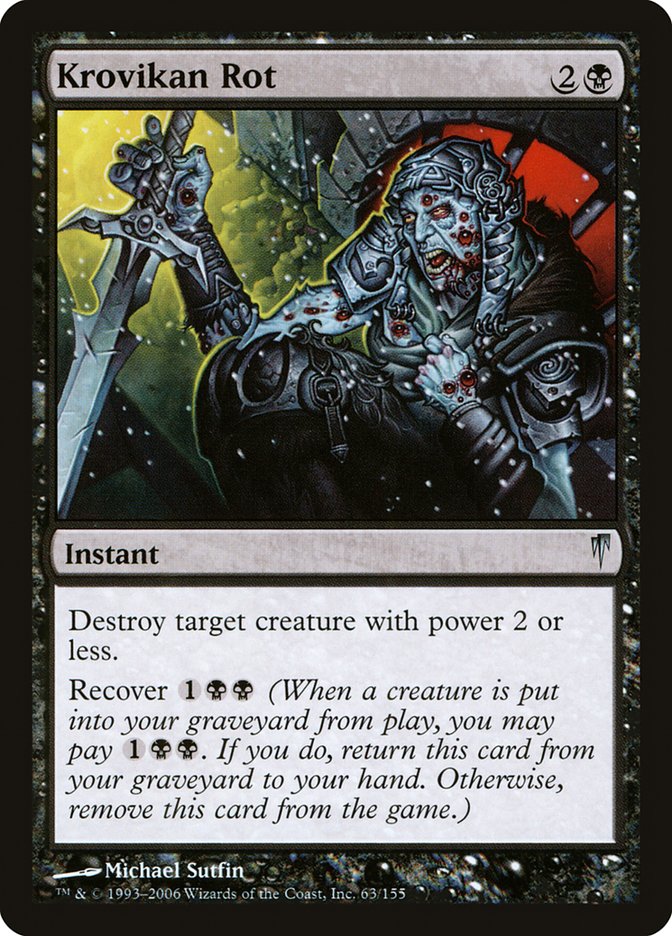



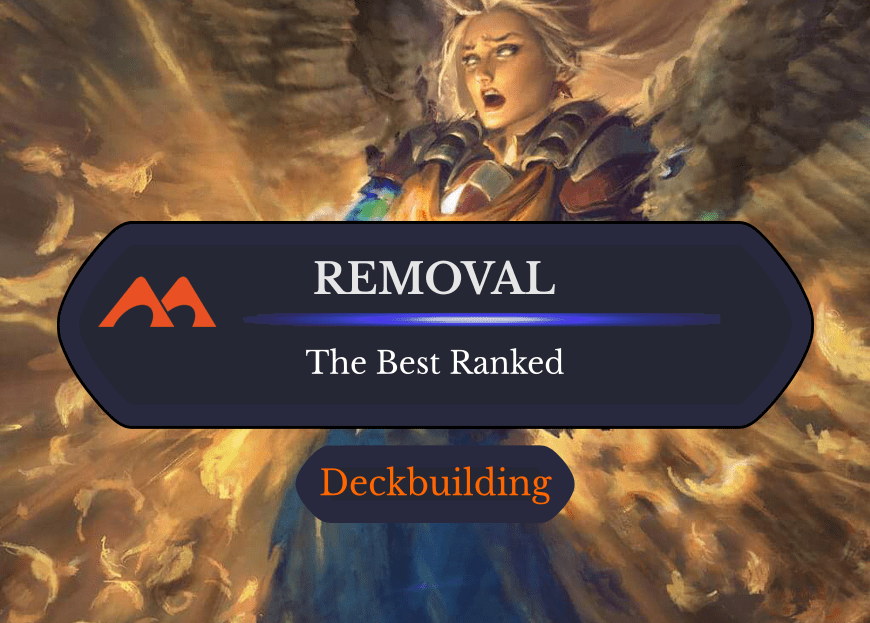
Add Comment